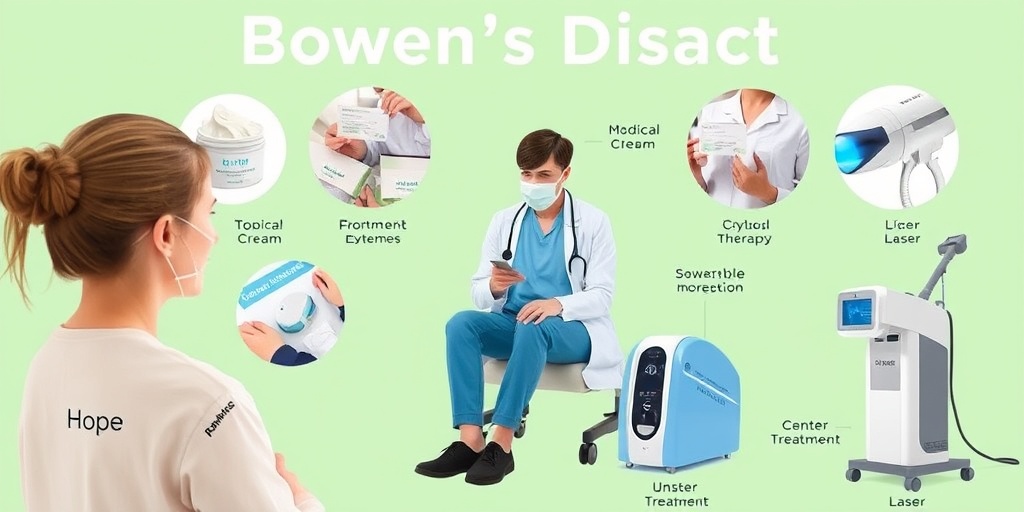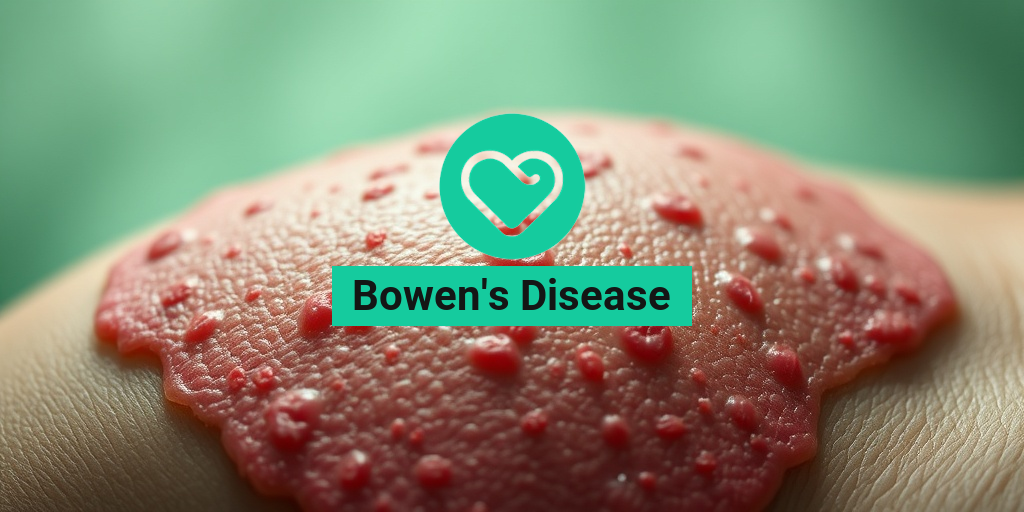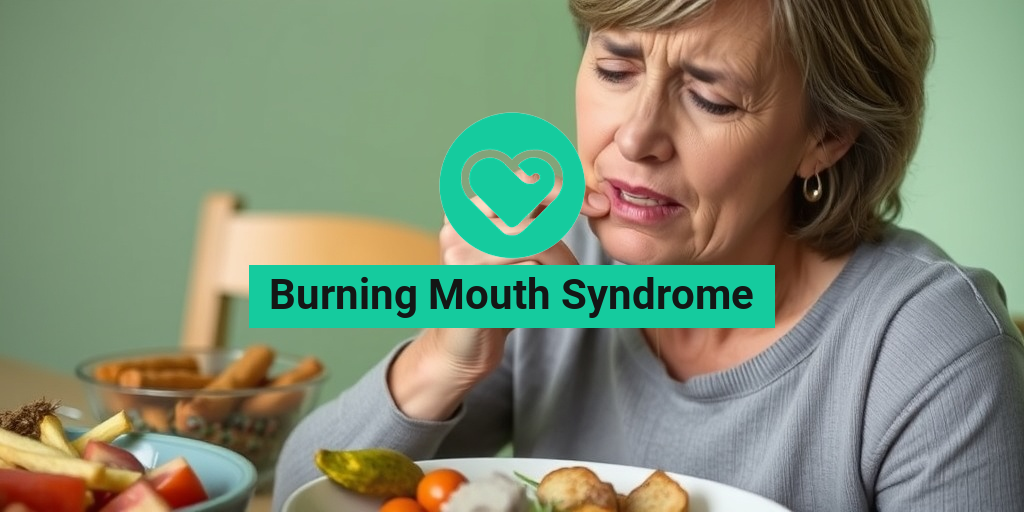What Is Bowen’s Disease?
Bowen’s Disease, also known as squamous cell carcinoma in situ, is a type of skin cancer that primarily affects the outer layer of the skin, known as the epidermis. This condition is characterized by the uncontrolled growth of abnormal cells, which can lead to more serious forms of skin cancer if left untreated. While it is not considered life-threatening, early detection and treatment are crucial to prevent progression.
Causes and Risk Factors
The exact cause of Bowen’s Disease is not fully understood, but several factors can increase the risk of developing this condition:
- Sun Exposure: Prolonged exposure to ultraviolet (UV) radiation from the sun is a significant risk factor.
- Age: Bowen’s Disease is more common in older adults, particularly those over 60.
- Skin Type: Individuals with fair skin, light hair, and light eyes are at a higher risk.
- Immune System Suppression: People with weakened immune systems, such as those undergoing chemotherapy or with HIV/AIDS, are more susceptible.
- Chronic Skin Conditions: Conditions like psoriasis or long-standing skin ulcers can increase the risk.
Diagnosis of Bowen’s Disease
Diagnosis typically involves a thorough examination of the skin by a healthcare professional. If Bowen’s Disease is suspected, a biopsy may be performed to confirm the presence of abnormal cells. This involves taking a small sample of the affected skin for laboratory analysis.
Bowen’s Disease Symptoms
Recognizing the symptoms of Bowen’s Disease is essential for early intervention. The signs can vary, but common symptoms include:
Visual Indicators
- Red or Brown Patches: The most noticeable symptom is the appearance of red or brown patches on the skin, often with a scaly or crusty surface.
- Itching or Burning: Some individuals may experience itching or a burning sensation in the affected area.
- Changes in Texture: The skin may feel rough or dry, and the patches can become raised over time.
- Bleeding or Oozing: In some cases, the lesions may bleed or ooze, indicating a need for immediate medical attention.
Common Locations
Bowen’s Disease can occur anywhere on the body, but it is most commonly found in areas that receive significant sun exposure, such as:
- Face
- Neck
- Scalp
- Hands
- Arms
When to Seek Medical Attention
If you notice any of the symptoms mentioned above, it is important to consult a healthcare professional. Early diagnosis and treatment can prevent the progression of Bowen’s Disease to invasive squamous cell carcinoma, which can be more serious.
For those seeking more information about Bowen’s Disease, including images and detailed pathology outlines, resources like Yesil Health AI (yesilhealth.com) can provide evidence-based health answers and guidance.
In conclusion, while Bowen’s Disease is a manageable condition, awareness of its symptoms and risk factors is vital. Regular skin checks and consultations with healthcare providers can lead to early detection and effective treatment, ensuring better outcomes for those affected. 🌞

Causes of Bowen’s Disease
Bowen’s Disease, also known as squamous cell carcinoma in situ, is a type of skin cancer that primarily affects the outer layer of the skin (epidermis). Understanding the causes of Bowen’s Disease is crucial for prevention and early detection. Here are some of the primary factors that contribute to its development:
1. UV Radiation Exposure
One of the most significant causes of Bowen’s Disease is prolonged exposure to ultraviolet (UV) radiation from the sun or artificial sources like tanning beds. UV rays can damage the DNA in skin cells, leading to abnormal growth and the potential development of cancerous lesions. It’s essential to protect your skin by using sunscreen, wearing protective clothing, and avoiding excessive sun exposure, especially during peak hours. ☀️
2. Age and Skin Type
As we age, our skin becomes thinner and less resilient, making older adults more susceptible to skin conditions, including Bowen’s Disease. Additionally, individuals with fair skin, light hair, and light eyes are at a higher risk due to their lower levels of melanin, which provides some protection against UV radiation.
3. Chronic Skin Conditions
Chronic skin conditions, such as psoriasis or eczema, can increase the risk of developing Bowen’s Disease. These conditions often lead to skin inflammation and damage, which can create an environment conducive to the development of cancerous cells.
4. Immunosuppression
Individuals with weakened immune systems, whether due to medical conditions (like HIV/AIDS) or immunosuppressive medications (often prescribed for organ transplants or autoimmune diseases), are at a higher risk for Bowen’s Disease. A compromised immune system may not effectively combat abnormal cell growth, allowing precancerous lesions to develop.
5. Chemical Exposure
Certain chemicals, particularly arsenic, have been linked to an increased risk of Bowen’s Disease. Occupational exposure to these substances, often found in industries like agriculture or mining, can elevate the likelihood of developing skin lesions. It’s vital for workers in these fields to follow safety guidelines and use protective gear.
Risk Factors for Bowen’s Disease
In addition to the causes, several risk factors can increase the likelihood of developing Bowen’s Disease. Being aware of these factors can help individuals take proactive measures to protect their skin health.
1. Personal History of Skin Cancer
If you have previously been diagnosed with skin cancer, your risk of developing Bowen’s Disease increases. Regular skin checks and monitoring for any changes in existing moles or skin lesions are essential for early detection.
2. Family History
A family history of skin cancer can also elevate your risk. Genetic predispositions can play a significant role in how your skin responds to environmental factors, making it crucial to discuss your family history with a healthcare provider.
3. Gender
Research indicates that men are more likely to develop Bowen’s Disease than women. This discrepancy may be attributed to differences in sun exposure habits and occupational risks. Men should be particularly vigilant about skin checks and protective measures.
4. Location and Climate
Living in sunny climates or areas with high UV exposure can increase the risk of Bowen’s Disease. Regions closer to the equator or those with high altitudes often have stronger UV radiation, necessitating extra precautions for residents.
5. Lifestyle Factors
- Smoking: Tobacco use has been linked to various skin cancers, including Bowen’s Disease. Quitting smoking can significantly reduce your risk.
- Alcohol Consumption: Excessive alcohol intake may weaken the immune system and increase the risk of skin cancers.
By understanding the causes and risk factors associated with Bowen’s Disease, individuals can take proactive steps to protect their skin health. Regular skin examinations, sun protection, and awareness of personal and family medical history are vital components in the fight against this condition. 🩺

Diagnosing Bowen’s Disease
Bowen’s Disease, also known as squamous cell carcinoma in situ, is a type of skin cancer that can often be mistaken for other skin conditions. Early diagnosis is crucial for effective treatment and management. Here’s what you need to know about the diagnostic process for Bowen’s Disease.
Recognizing the Symptoms
The first step in diagnosing Bowen’s Disease is recognizing its symptoms. Patients may notice:
- Red, scaly patches on the skin that may bleed or crust over.
- Rough, wart-like growths that can appear on sun-exposed areas, such as the face, neck, and hands.
- Changes in existing moles or skin lesions, including color changes or irregular borders.
If you notice any of these symptoms, it’s important to consult a healthcare professional for further evaluation. 🩺
Physical Examination
During a physical examination, a dermatologist will assess the affected area. They will look for characteristic features of Bowen’s Disease, such as:
- Color and texture of the lesions.
- Size and shape of the patches.
- Location on the body.
In some cases, the dermatologist may use a dermoscope, a specialized tool that provides a magnified view of the skin, to help identify the disease more accurately. 🧐
Biopsy for Confirmation
While a physical examination can provide valuable insights, a definitive diagnosis of Bowen’s Disease typically requires a biopsy. This involves:
- Removing a small sample of the affected skin for laboratory analysis.
- Examining the sample under a microscope to check for abnormal cells characteristic of Bowen’s Disease.
Biopsy results can take a few days to a week, but they are essential for confirming the diagnosis and ruling out other skin conditions. 📅
Understanding the Pathology
Pathologists play a crucial role in diagnosing Bowen’s Disease. They will look for specific features in the biopsy sample, such as:
- Keratinocyte atypia, which indicates abnormal cell growth.
- Loss of normal skin architecture, showing that the cells are not behaving as they should.
Understanding these pathological features helps in determining the best course of treatment. 🧪
Bowen’s Disease Treatment Options
Once diagnosed, there are several treatment options available for Bowen’s Disease. The choice of treatment often depends on the size, location, and number of lesions, as well as the patient’s overall health. Here’s a look at the most common treatment methods.
Topical Treatments
For superficial cases of Bowen’s Disease, topical treatments can be effective. These include:
- 5-fluorouracil (5-FU): A chemotherapy cream that targets and destroys cancerous cells.
- Imiquimod: An immune response modifier that helps the body fight off the cancerous cells.
These treatments are usually applied directly to the affected area and can take several weeks to show results. 💊
Cryotherapy
Cryotherapy involves freezing the cancerous cells with liquid nitrogen. This method is effective for small lesions and is relatively quick, often requiring only a single session. Patients may experience some discomfort during the procedure, but it typically has a good success rate. ❄️
Electrosurgery
Electrosurgery uses high-frequency electrical currents to destroy cancerous tissue. This method is particularly useful for larger lesions and can be performed in a dermatologist’s office. It may require local anesthesia to minimize discomfort. ⚡
Laser Therapy
Laser therapy is another option for treating Bowen’s Disease. It involves using focused light beams to target and destroy abnormal cells. This method is often preferred for lesions on sensitive areas of the skin, such as the face. 🌟
Surgical Excision
In cases where the lesions are larger or more aggressive, surgical excision may be necessary. This involves:
- Removing the entire lesion along with a margin of healthy skin to ensure complete removal of cancerous cells.
- Sending the excised tissue for pathological examination to confirm that all cancerous cells have been removed.
Surgical excision is often considered the gold standard for treatment, especially for lesions that are suspected to progress to invasive squamous cell carcinoma. 🏥
Follow-Up Care
Regardless of the treatment chosen, follow-up care is essential. Regular skin checks can help monitor for any new lesions or changes in existing ones. Early detection of any recurrence is key to effective management. 📅
In conclusion, diagnosing and treating Bowen’s Disease involves a comprehensive approach that includes recognizing symptoms, conducting thorough examinations, and selecting appropriate treatment options. If you suspect you have Bowen’s Disease, consult a healthcare professional for personalized advice and care.

Home Remedies for Bowen’s Disease
Bowen’s Disease, a form of skin cancer, often presents as a persistent, scaly patch on the skin. While medical treatment is essential, many individuals seek home remedies to complement their care. Here, we explore some natural approaches that may help manage symptoms and promote skin health.
1. Aloe Vera
Aloe vera is renowned for its soothing properties. Applying fresh aloe vera gel directly to the affected area can help reduce inflammation and promote healing. Its natural antibacterial properties may also assist in preventing infections.
2. Apple Cider Vinegar
Apple cider vinegar (ACV) is often touted for its health benefits. Diluting ACV with water and applying it to the skin may help in exfoliating dead skin cells and promoting new cell growth. However, it’s crucial to perform a patch test first to ensure no adverse reactions occur.
3. Turmeric Paste
Turmeric contains curcumin, which has anti-inflammatory and antioxidant properties. Creating a paste with turmeric powder and water, then applying it to the affected area, may help reduce redness and irritation. Leave it on for about 30 minutes before rinsing off.
4. Coconut Oil
Coconut oil is a natural moisturizer that can help soothe dry, irritated skin. Its antimicrobial properties may also aid in preventing infections. Regularly applying coconut oil to the affected area can keep the skin hydrated and promote healing.
5. Green Tea
Green tea is rich in antioxidants, which can help combat skin damage. Drinking green tea regularly or applying cooled green tea bags to the affected area may provide relief and support skin health.
6. Diet and Nutrition
Maintaining a healthy diet is crucial for overall skin health. Incorporating foods rich in antioxidants, such as berries, nuts, and leafy greens, can help support your body’s healing processes. Staying hydrated by drinking plenty of water is also essential for maintaining skin elasticity and health.
7. Essential Oils
Some essential oils, like tea tree oil and lavender oil, have been noted for their potential skin benefits. Diluting these oils with a carrier oil and applying them to the affected area may help soothe irritation and promote healing. Always consult with a healthcare provider before using essential oils, especially if you have sensitive skin.
Preventing Bowen’s Disease
Prevention is always better than cure, especially when it comes to skin conditions like Bowen’s Disease. Here are some effective strategies to help reduce your risk:
1. Sun Protection
One of the most significant risk factors for Bowen’s Disease is prolonged sun exposure. To protect your skin:
- Use Sunscreen: Apply a broad-spectrum sunscreen with an SPF of at least 30, even on cloudy days.
- Wear Protective Clothing: Long sleeves, hats, and sunglasses can shield your skin from harmful UV rays.
- Avoid Peak Sun Hours: Try to stay indoors during the sun’s peak hours, typically between 10 AM and 4 PM.
2. Regular Skin Checks
Performing regular self-examinations of your skin can help you catch any unusual changes early. Look for:
- New growths or sores that do not heal.
- Changes in existing moles or spots.
- Any persistent patches of skin that are scaly or rough.
If you notice any concerning changes, consult a dermatologist promptly.
3. Avoid Tanning Beds
Using tanning beds can significantly increase your risk of developing skin cancers, including Bowen’s Disease. Opt for safer alternatives like self-tanning lotions or bronzers if you desire a tanned look.
4. Healthy Lifestyle Choices
Maintaining a healthy lifestyle can bolster your skin’s resilience. Consider the following:
- Balanced Diet: Focus on a diet rich in fruits, vegetables, whole grains, and lean proteins.
- Stay Hydrated: Drinking enough water helps keep your skin hydrated and healthy.
- Avoid Smoking: Smoking can impair blood flow to the skin, making it more susceptible to damage.
5. Regular Dermatological Visits
Regular check-ups with a dermatologist can help monitor your skin health and catch any potential issues early. Discuss any concerns you have regarding your skin, especially if you have a history of skin cancer or other skin conditions.
By incorporating these preventive measures and considering natural remedies, you can take proactive steps toward managing and preventing Bowen’s Disease. Remember, always consult with a healthcare professional before starting any new treatment or remedy. 🌿

Frequently Asked Questions about Bowen’s Disease
What is Bowen’s Disease?
Bowen’s Disease is a form of skin cancer that is classified as squamous cell carcinoma in situ. It appears as a persistent, scaly patch on the skin and is often mistaken for other skin conditions. Early detection and treatment are crucial for effective management.
What are the symptoms of Bowen’s Disease?
The symptoms of Bowen’s Disease typically include:
- Red or brown scaly patches on the skin
- Itching or irritation in the affected area
- Crusting or bleeding of the lesions
- Changes in the texture of the skin
How is Bowen’s Disease diagnosed?
Diagnosis of Bowen’s Disease usually involves a physical examination by a dermatologist, who may perform a biopsy to confirm the presence of cancerous cells. Dermoscopy can also be used to examine the skin lesions more closely.
What are the treatment options for Bowen’s Disease?
Treatment options for Bowen’s Disease may include:
- Topical chemotherapy
- Cryotherapy (freezing the lesion)
- Electrosurgery
- Laser therapy
- Surgical excision
It’s important to discuss the best treatment option with a healthcare provider based on individual circumstances.
Can Bowen’s Disease occur on the face?
Yes, Bowen’s Disease can occur on the face, as well as other sun-exposed areas of the body. It is essential to monitor any changes in the skin and seek medical advice if you notice suspicious lesions.
Is Bowen’s Disease related to other skin conditions?
Bowen’s Disease can sometimes be confused with other skin conditions such as psoriasis or eczema. However, it is important to get a proper diagnosis from a healthcare professional to ensure appropriate treatment.
What is the prognosis for Bowen’s Disease?
The prognosis for Bowen’s Disease is generally good, especially when detected early. With appropriate treatment, most patients can expect a full recovery. However, regular follow-up is recommended to monitor for any recurrence.
Where can I find images of Bowen’s Disease?
Images of Bowen’s Disease can be found on various medical websites and dermatology resources. Websites like DermNet provide detailed images and descriptions to help with identification.
What is the ICD-10 code for Bowen’s Disease?
The ICD-10 code for Bowen’s Disease is C44.52, which is used for billing and coding purposes in healthcare settings.
Can Bowen’s Disease be prevented?
While there is no guaranteed way to prevent Bowen’s Disease, minimizing sun exposure and using sunscreen can help reduce the risk of developing skin cancers. Regular skin checks are also recommended for early detection.
Where can I find more information about Bowen’s Disease?
For more information about Bowen’s Disease, consider visiting reputable medical websites, consulting with a dermatologist, or accessing resources like DermNet for detailed pathology outlines and treatment options.




